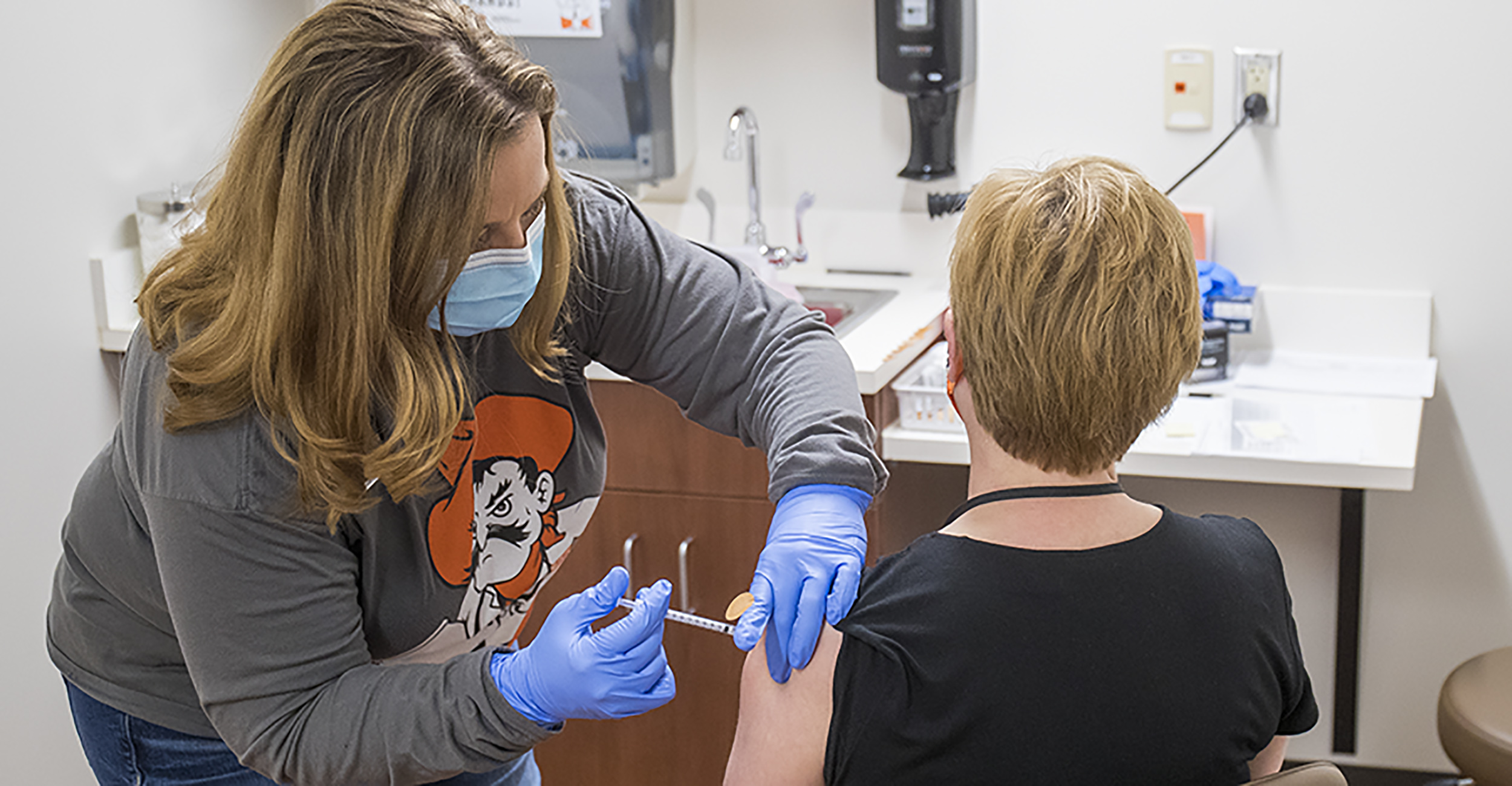
OSU Extension joins CDC in vaccine education effort
Monday, May 24, 2021
Media Contact: Brian Brus | Agricultural Communications Services | 405-744-6792 | BBrus@okstate.edu
Nearly $10 million in federal funds has been committed to vaccination education efforts through land-grant universities and national Cooperative Extension System participants such as Oklahoma State University Extension.
The Centers for Disease Control and Prevention provided the funding to the U.S. Department of Agriculture’s National Institute of Food and Agriculture to support an innovative approach to reach those rural communities in greatest need of vaccinations in the face of the COVID-19 pandemic.
“Our goal is to help people overcome their hesitancy and get as many people vaccinated as possible,” said Steve Beck, state 4-H program leader with the Oklahoma 4-H Youth Development program at OSU. “If we get even 10 more people protected as a result of these efforts, it’s a success for Oklahoma.”
Gina Peek, OSU Extension interim associate dean, agreed with NIFA director Carrie Castille’s assessment of that agency’s partnership when Castille noted the Cooperative Extension System has a century of experience as change agents and educators in communities.
“NIFA is proud to be the federal partner with such a trusted educational resource, but especially in this effort to deliver science-based vaccine education,” Castille said. “This new partnership with CDC is a natural fit for the Extension System to do what they do best — provide balanced, reliable information so people can make informed decisions.”
Peek and Beck said their plans for outreach in Oklahoma rely heavily on the trusted relationships already forged by 4-H members and OSU Extension educators and specialists.
“We have really strong connections with people and other organizations in all of our counties,” Peek said, citing the Oklahoma Home and Community Education organization as an example. “Other teams we’re looking at for help are the 4-H Healthy Living ambassadors and the Family and Consumer Sciences Master Volunteers.”
Outreach efforts across the country will be as unique as the communities served. For example, the University of Vermont Extension staff has already conducted onsite COVID-19 vaccination clinics at several farms. The University of Florida and the University of Kentucky are hosting clinics at several of their local Extension offices.
Peek said in putting together OSU’s application for funding, they looked at several statistical measures that describe Oklahoma communities and their needs. The CDC uses 15 social factors such as poverty, lack of vehicle access and crowded housing to develop an overall social vulnerability index, measured on a scale of zero to one. The counties selected for attention in Oklahoma all have high SVIs: Choctaw, Greer, Harmon, Le Flore and McCurtain. Counties also were selected based on income attainment data and high school graduation rates.
Those factors combined often are indicators of vaccine hesitancy, according to current research. Further, rural populations, which trend older and with higher disease risks, have surpassed urban populations in COVID death rates.
Overcoming those problems to provide science-based information and allay people’s fears often requires a more personal touch, Peek said.
“You’ve got to hear it from a friend,” she said. “People turn to their trusted social networks for information to act on. The strength of outreach relies on human connection.”
